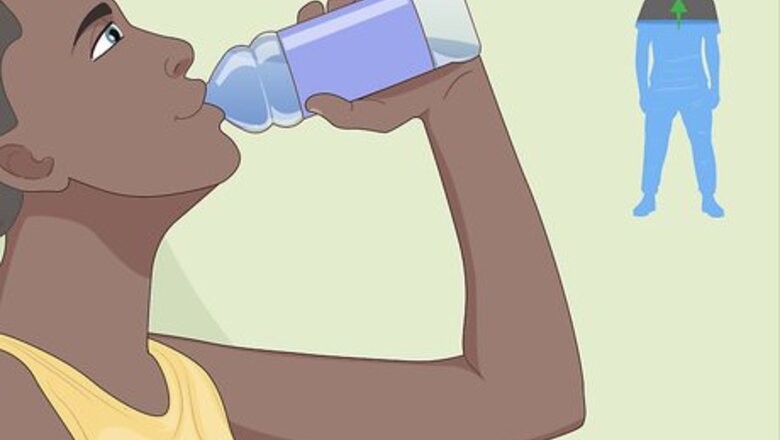
views
X
Trustworthy Source
National Institute of Diabetes and Digestive and Kidney Diseases
Health information from the National Institute of Diabetes and Digestive and Kidney Diseases, a division of the U.S. National Institutes of Health
Go to source
However, you likely don't have an appetite because of your stomach discomfort, even if you know you need to eat something. Stomach viruses are very common and often cause nausea, abdominal cramps, watery diarrhea, and vomiting.[2]
X
Trustworthy Source
Mayo Clinic
Educational website from one of the world's leading hospitals
Go to source
Research suggests that you should sip clear liquids while you're feeling sick and slowly start eating again by choosing easy-to-digest foods, like crackers and bananas.[3]
X
Trustworthy Source
Mayo Clinic
Educational website from one of the world's leading hospitals
Go to source
Replacing Liquids
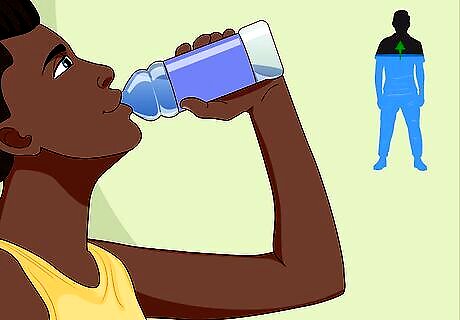
Stay hydrated. It seems obvious, but having a stomach virus causes considerable fluid loss through not only vomiting and diarrhea, but also sweat. Sometimes keeping anything down without subsequent regurgitation is difficult; so, drinking water or chewing small ice chips, serves as a great fluid replacement.
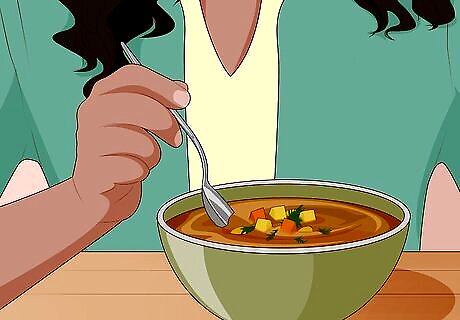
Drink some broth. Hyponatremia — low sodium levels in the blood — is a potentially fatal condition, that can be caused by a loss of salt-rich body fluid. Salt and other electrolytes are lost via both vomit and diarrhea. The positive aspect of broth is that it not only provides a liquid, but it also provides sodium.
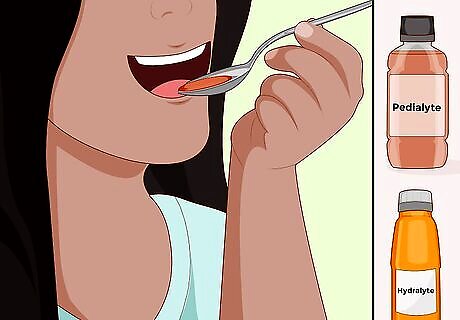
Drink an oral rehydration solution. To help replace electrolytes (e.g. sodium, potassium, magnesium), look for an oral rehydration solution. These often end with "lyte," such as Pedialyte or Hydralyte. They are easily found at your local drugstore or grocery store and are appropriate for rehydrating children who are sick.
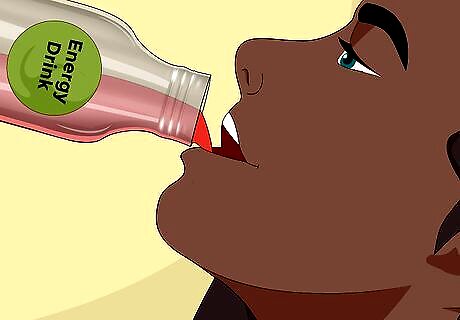
Choose a sports beverage. Sports drinks contain electrolytes important for fighting dehydration. An added benefit to sports drinks is the ingredient sodium citrate, a form of sodium that is easily digested and also helps minimize qualmish stomachs. Calm your stomach, replace electrolytes, and fill fluids all in one shot.
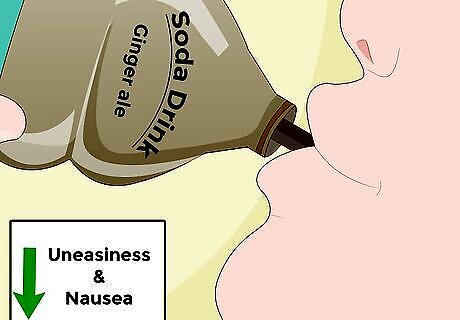
Sip a soda. You may call it a coke or a pop, but drinking cold sodas — especially carbonated drinks with ginger ale or peppermint — can aid with uneasiness and nausea. If you're feeling a bit sluggish, opt for the regular soda instead of diet; you may need the sugar to boost energy.
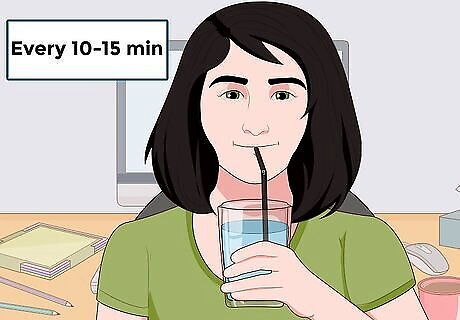
Keep your liquids down. It is important to start slowly by rehydrating in small steps. Try drinking or sipping something small in specific increments, perhaps every 15–10 minutes. If symptoms dissipate, try drinking more frequently until you feel normal again. Sipping, not gulping or drinking large amounts of fluid is recommended in the case of oral rehydration therapy. Drinking large quantities in one sitting can increase chances of vomiting and having to start rehydration process again.
Consuming Food
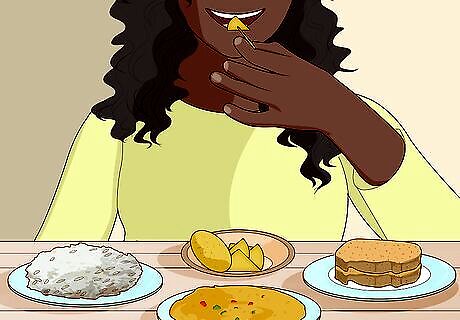
Nibble on a starch. Since a bunch of food could re-aggravate an upset stomach, it's best to try simple foods that are easy to digest. A settling could be accomplished with some toast, potatoes, oats or rice. Added bonus: they do not activate acid reflux.
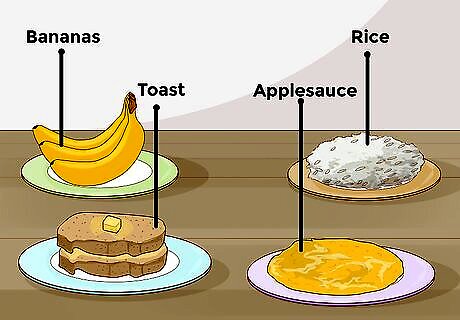
Bite a banana. While the BRAT (Bananas, Rice, Applesauce and Toast) diet is no longer the primary recommendation for those with gastroenteritis, there are still three great banana benefits. First, the potassium they possess help fight dehydration. Second, sugars provide a surge of energy if you are feeling lethargic. Finally, they are easy to keep down and do not exacerbate nausea.
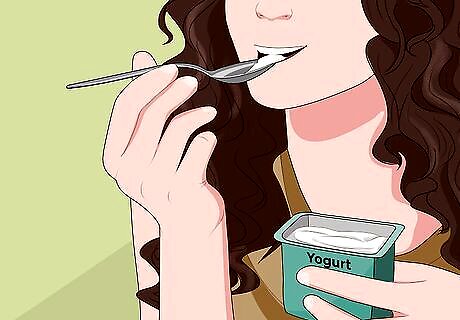
Enjoy some yogurt. While the BRAT diet has been de-emphasised, some have modified acronym to include "Y" at the end (i.e. BRATY). Not only does yogurt have active bacteria cultures that reduce diarrhea, but it also shortens the toilet time. Be sure to choose a yogurt without large amounts of sugar, which may upset your stomach somewhat. Yogurt cultures have probiotics which help replenish natural flora in gut to help normalize the balance between normal flora to help gut function more efficiently.
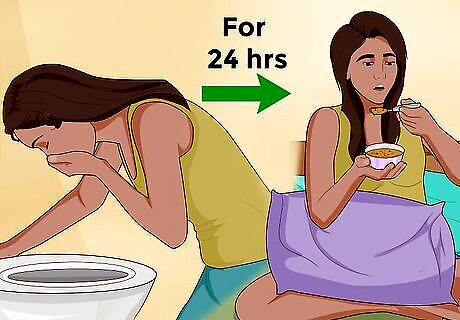
Eat delicately. After vomiting subsides for about 24 hours, it's best to eat bland, soft, easy-to-digest foods without red food coloring — to avoid mistaking the color for blood — in smaller bites for roughly three days. The gastrointestinal tract needs to settle, so do whatever is necessary to keep liquids and/or food down, even if that means washing down some food with your primarily liquid diet.
Adopting Alternatives
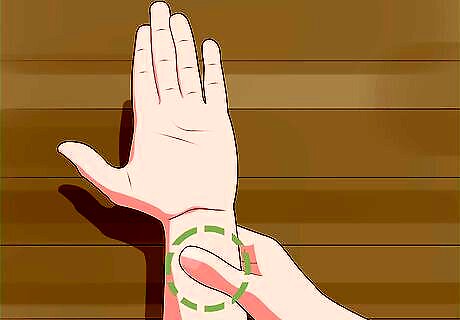
Push a pressure point. Acupressure has been shown to help with nausea, and that may allow you to eat something. In addition, acupressure fights inflammation, which could be a supplementary issue to the stomach virus.
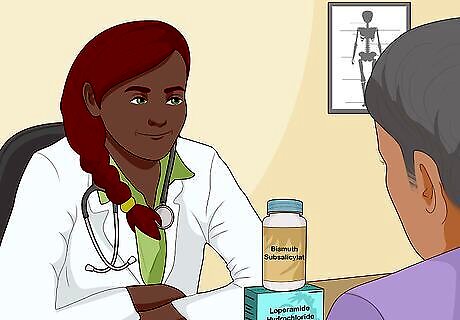
Talk to your doctor about appropriate medications. A step towards eating is getting better. Some over-the-counter medications like bismuth subsalicylate (Pepto-Bismol) and loperamide hydrochloride (Imodium) may help with nausea, but there are a variety of prescription medications that could help. Be aware that a stomach virus is not treatable with antibiotics (antibiotics work only for bacterial infections), so you will either need an antiviral like Theraflu, or to treat the symptoms of your virus while your body fights it off.

Take a nap. It may seem like common sense, but one of the best things to help with any illness is rest. Getting adequate recovery time may get you over the hump just enough to start keeping down foods and liquids.


















Comments
0 comment